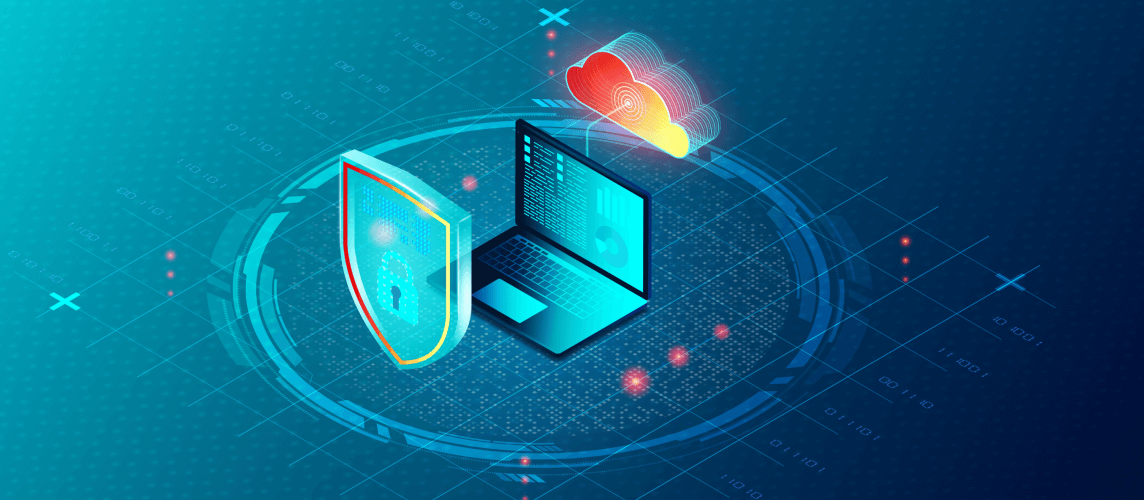When is a PWA and when a native application?
Choosing between a Progressive Web App (PWA) and a native app is crucial for companies and developers. Both approaches have their unique advantages and limitations, check out which ones!
Architecture and technologies
PWAs are web applications that use the latest technologies to provide users with experiences similar to native applications. The main elements of the PWA architecture are:
- Service Workers: Background scripts that manage resource caching, offline functionality, and push notifications.
- Web App Manifest: A JSON file containing app metadata such as icons, colors, and full-screen mode that allows the PWA to be "installed" on user devices.
- HTTPS: A security requirement for PWAs, ensuring that all data transferred between the server and client is encrypted.
The architecture of native applications is slightly different. Native applications are created with a specific platform in mind (iOS, Android) and use native APIs and SDKs provided by operating system manufacturers. The key elements of native application architecture are:
- Platform-specific source code: Written in languages such as Swift for iOS, Kotlin/Java for Android.
- Native API: Direct access to OS features such as camera, GPS, sensors and push notifications.
- Frameworks and Tools: Tools like Xcode for iOS and Android Studio for Android that offer toolkits for building, testing, and deploying applications.
PWAs are created using basic web technologies such as HTML, CSS and JavaScript. HTML provides the structure of the page, CSS provides styling, and JavaScript provides interactivity. For more advanced user interfaces, frameworks such as Angular, React or Vue.js are often used.
These frameworks enable the creation of dynamic and responsive applications. Additionally, libraries such as Workbox are used to manage cache and Service Workers, which allows for efficient use of cache memory and offline application operation. Native iOS apps are built using the Swift and Objective-C programming languages.
Swift is a modern language that is preferred for its efficiency and simplicity, while Objective-C is an older language that is still used in many existing projects. Android applications are developed using Kotlin and Java.
Kotlin is a newer language that is gaining popularity due to its brevity and security. In addition to native technologies, cross-platform frameworks such as React Native or Flutter are used to create applications for multiple platforms simultaneously. These frameworks allow you to write a single source code that can then be run on both iOS and Android, significantly speeding up the application development process and reducing costs.
Efficiency
Application performance is a key factor that can determine the choice between a Progressive Web APP (PWA) and a native application.
Performance differences may impact application speed, user interface responsiveness, and device resource usage.
PWA performance
PWA, although it offers many advantages, such as offline availability and the ability to install directly from the browser, may encounter some performance limitations. Since PWAs are essentially web applications, they run in a browser environment, which can lead to higher latency compared to native applications.
The use of JavaScript and other web technologies can also burden the device's processor and memory, especially in the case of more complex applications.
Native application performance
Native applications, on the other hand, have direct access to system resources, which allows them to maximize performance. Because they are written in platform-specific languages (e.g. Swift/ObjectiveC for iOS, Kotlin for Android), they can better leverage hardware capabilities such as CPU, GPU and memory.
Native applications also offer more fluid and responsive user interfaces, which is especially important for games, multimedia applications and other technologically advanced projects.
The choice between a PWA and a native application in terms of performance mainly depends on the specifics of the project. Native applications typically offer better performance and deeper integration with the operating system, which is crucial for more technologically advanced applications.

Check which application will work for your company!
Security
Data security is a key aspect of every mobile application, including PWA. PWA requires the use of the HTTPS protocol, which ensures encryption of data sent between the browser and the server.
Thanks to this, users can be sure that their data is protected during transmission. Native applications also need to ensure a high level of security for user data.
Apple and Google, for iOS and Android respectively, have strict security requirements for applications published in their stores (App Store and Google Play Store).
Verification and audit processes are used to ensure that applications meet specific security standards.
With native access to system features such as biometric authentication, API security, and Man-in-the-Middle attack protection, native apps can provide more advanced security measures compared to PWAs.
Updates and version management
Updates for PWAs are managed by Service Workers, which allow applications to automatically download and install new versions in the background.
Thanks to this, users always have access to the latest functionality and fixes without having to manually update.
The PWA update process is more seamless and faster compared to native apps, which often require manual downloading and installation of updates by the user or through app stores.
Native apps are subject to a more stringent update process, especially when published on the App Store or Google Play Store.
Operating system manufacturers require compliance with certain security and performance standards, which may delay the availability of new versions of applications to users. Additionally, each update must go through a review process to ensure it does not violate platform policies or introduce bugs. Version Management and Release Strategy Version management is a key element for both PWAs and native applications. In the case of PWAs, developers can employ automatic update strategies that ensure that all users benefit from the latest features and security patches.
However, for native applications, it is necessary to carefully plan and test each version before releasing it to users to prevent potential performance or security problems.
User Experience (UX) and user interface
The UX capabilities in Progressive Web Apps (PWA) are designed to provide users with a pleasant and intuitive experience. Thanks to the use of modern web technologies and responsive design, PWAs offer:
- Responsive: Adapts to different screen sizes and devices, ensuring consistency and user experience whether you're using a computer, tablet or smartphone.
- Speed: Faster loading thanks to resource caching by Service Workers and code optimization, which reduces the time users wait for interactions.
- Animations and interactivity: Ability to create smooth animations and interactive user interface elements, which improves the visual and usability experience.
Popular frameworks and libraries such as Angular, React or Vue.js are often used to design user interfaces in PWA. These tools not only make it easier to create advanced UI components, but also offer many ready-made solutions for handling gestures, animations and application navigation.
UX in native applications Native applications, written in languages such as Swift for iOS and Kotlin for Android, use native components and APIs, which allows for even better adjustment of the user interface to the specific guidelines of each platform. The main advantages of UX in native applications are:
- Native Gestures and Animations: Access specialized user gestures and native animations that make interactions more natural and intuitive.
- Optimized user experience: Personalize the interface based on device-specific features and capabilities, resulting in a better user experience.
Integration with the operating system
PWA Integration with the Operating System Progressive Web Apps (PWA) offer some integration capabilities with the operating system, although they are not able to provide as deep integration as native applications.
Key aspects of PWA integration with the operating system include push notifications, desktop installation, and location access.
PWAs can send push notifications to users, which increases engagement and allows them to immediately inform about important events.
Thanks to Web App Manifest and Service Workers, users can install PWAs on their device's desktop, giving them easy access to applications without having to open a browser.
PWAs can also access a user's location using the Geolocation API, which is useful for applications that require location information. It is worth noting, however, that these are not direct references to system services, and the gateway here is the browser. PWAs use browser APIs that allow access to certain resources. This means that PWAs do not integrate directly with the operating system in the same way as native applications.
All the above functions are performed by a web browser, which acts as an intermediary between the application and the operating system. This means that PWAs use browser APIs that offer some integration capabilities, but cannot gain full access to system resources like native applications. PWAs can install a desktop shortcut that opens the app in a browser without a visible address bar, making it look like a native app.
Despite this, PWAs still run within the browser and are limited to the features that the browser provides. For example, PWAs do not have access to advanced hardware features such as system-level file management, full support for hardware features, or integration with native background services.
In summary, although PWAs can offer many features similar to native applications, their operation and integration with the operating system are limited by the capabilities of browsers that act as an intermediary.
Native application integration
Native apps offer much deeper integration with the operating system thanks to native APIs and SDKs. Here are some of the integration possibilities:
- Access to advanced hardware features: Such as sensors and Bluetooth.
- Integration with system services: Such as the notification system, multimedia applications and system settings.
- Native Gestures and Interactions: Native apps can use native gestures and animations, making interactions more fluid and natural for users.
Summary
When comparing Progressive Web Apps (PWA) and native apps, the key differences and takeaways are:
- Performance and offline access: Native apps offer better performance thanks to direct access to system resources, but PWAs can run offline thanks to Service Worker technology, although they have significant limitations in this regard. This includes the capacity of the database, which makes native applications perform better in this case.
- Costs and management: PWA development is usually cheaper due to uniform code and easier updates, while native applications may require more financial resources. OS Integration: Native apps have better integration with the OS, allowing you to take advantage of the device's native features, while PWAs offer some integration features via web browser APIs, but not as deep as native apps.
- User Experience (UX): UX in native apps can be more fluid thanks to native gestures and animations, while PWAs use modern web technologies for responsive design.
- Support for various platforms and devices: PWAs are more universal, working on various browsers and devices, while native applications require separate versions for iOS and Android.
It is worth remembering that PWAs are still web applications running in the browser that only pretend to be native applications through Service Worker and the ability to install a shortcut on the desktop that opens the browser without a visible address bar.
The decision to choose between a PWA and a native app should be based on your specific project needs, budget, and expectations for performance and integration with the operating system. Both approaches have their advantages and respective applications in various business scenarios.



















